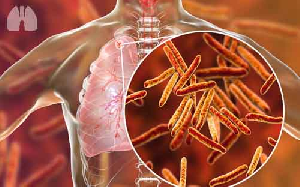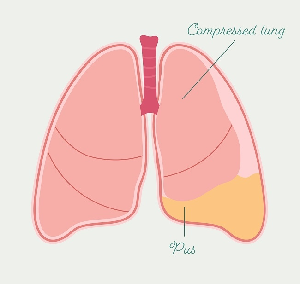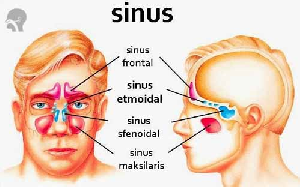
Miguel Meira e Cruz, Masaaki Miyazawa, David Gozal
European Respiratory Journal 2020 55: 2001023; DOI: 10.1183/13993003.01023-2020
Introduction
Severe acute respiratory syndrome coronavirus 2 (SARS-CoV-2), the aetiological agent of the pandemic coronavirus disease 2019 (COVID-19), is a newly found member of the Coronaviridae family, and is closely related to, albeit with important differences from, SARS-CoV. It enters human cells through the binding of surface spike (S) glycoprotein with angiotensin-converting enzyme 2 (ACE2). The distal S1 subunit of the S protein is responsible for receptor binding, while the transmembrane S2 subunit mediates fusion between the viral envelope and the target cell membrane following proteolytic cleavage by specific cellular enzymes such as transmembrane serine protease 2 for S protein priming. As it is likely that expression levels of ACE2 affect the efficiency of virus attachment and entry, as well as disease severity, and the interactions between viral S protein and ACE2 may directly cause lung injury, ACE2 may be a potential target of therapeutic and preventative interventions.
Viral infection pathophysiology and the role of the circadian clock system
The pathogenicity of viral infections can be affected by the host's circadian clock system via two different mechanisms (figure 1): 1) direct regulation of viral replication within the target cells; and 2) indirect effects on innate and adaptive immune responses. For example, BMAL1, one of the key regulators of the circadian oscillator, directly affects mouse herpes virus infection in cultured cells and herpes virus replication is significantly enhanced in cells lacking the BMAL1 molecule. Conversely, acute infection with mouse herpes virus increases BMAL1 expression, which consequently deranges or enhances cell-autonomous rhythms depending at what point in the circadian cycle the infection takes place. Absence of BMAL1 affects the expression of cellular factors involved in protein biosynthesis, endoplasmic reticulum function and vesicular trafficking, all of which are important elements in intracellular replication of coronaviruses. Similarly, BMAL1 and REV-ERBα, the nuclear receptor family intracellular transcription factor required for synchronising and maintaining the peripheral clock, influence multiple steps in the hepatitis C virus life cycle, including its ability to enter hepatocytes as well as the RNA genome replication of the virus within hepatocytes. Knock-out approaches of Bmal1, genetic over-expression or increased REV-ERB activity using synthetic agonists, markedly reduce the replication of not only hepatitis C virus but also of other flaviviruses, such as Dengue and Zika viruses, through disruption of lipid signalling pathways .

FIGURE 1
Possible links between severe acute respiratory syndrome coronavirus 2 (SARS-CoV-2) infection and the circadian clock system. Blue arrows indicate known links between cellular BMAL1 expression and replication of or responses to other viruses. Angiotensin-converting enzyme 2 (ACE2) expression on respiratory epithelial cells may be regulated through type 1 interferon (IFN-I)-induced mechanisms. As the surface S glycoprotein of SARS-CoV-2 binds the protease domain of ACE2, virus attachment may directly compete with the processing of angiotensin II (ATII) to Ang(1–7), a negative regulator of the renin–angiotensin system. ATII is known to be proinflammatory, while Ang(1–7) is anti-inflammatory. IFN-I signalling in the late phase of coronavirus infection induces exaggerated cytokine production and more severe lung injury. BMAL1 regulates IFN-I and chemokine CXCL5 production. ATII is known to affect the central clock system in the suprachiasmatic nuclei (SCN) through its effect on Per2 levels. TMPRSS2: transmembrane serine protease 2; ER: endoplasmic reticulum.
It is now well established that there is seasonal variation of BMAL1 expression, with the lowest values being recorded during winter, and these variations have been implicated in the high prevalence of respiratory viral diseases during winter, particularly in light of the observation that low BMAL1 expression enhances viral virulence. When mice were infected with herpes virus at various time-points of the day, significant effects were ascribed to the circadian clock. Thus, the circadian clock appears to influence both the infectivity of viruses as well as their ability to replicate inside the host. Furthermore, we surmise that since the circadian clock machinery is intrinsically involved in the regulation of angiotensin pathways, particularly in the transcriptional expression of ACE2, an imputed role for the circadian clock in regulating the infectivity to SARS-CoV-2 is highly probable.
The host circadian clock has now been recognised as a major modulator of immune/inflammatory responses in general, and in particular following respiratory virus infections in vivo. It has been shown that an endogenous circadian clock within lung epithelial cells modulates neutrophil recruitment through the chemokine ligand CXCL5. Genetic ablation of BMAL1 in the bronchioles resulted in a disruption of CXCL5 expression rhythms, leading to exaggerated inflammatory responses upon lipopolysaccharide stimulation. Depletion of BMAL1 also resulted in increased morbidity, mortality and virus replication in mice due to a lack of circadian regulation of interferon expression. Importantly, environmental disruption of circadian function by an experimental chronic jet lag model resulted in disrupted temporal expression of BMAL1 in the lungs and increased weight loss after respiratory Sendai virus infection.
The time of infection not only changes susceptibility but also predicts survival after influenza virus infection in mice. Mice infected at the beginning of their active phase showed higher mortality than those infected at the onset of the rest phase. These temporal differences were abolished in mice lacking BMAL1 expression. Interestingly, heightened inflammation was observed in mice infected at the onset of the active phase, while the number of natural killer (NK) cells was significantly higher in the group infected just prior to the rest phase, suggesting that circadian regulation of innate immunity plays a major role in these differences. Indeed, depletion of NK cells abolished the time of day differences, indicating that the molecular clock controls host cell responses to influenza virus infection via NK cell functions.
It should be noted, however, that the roles of the host immune/inflammatory responses in the pathogenesis of influenza virus infection markedly differ from those involved in SARS-CoV-2 infection. Influenza virus replicates vigorously soon after infection and causes massive and sometimes dysregulated production of inflammatory cytokines, potentially leading to the so-called cytokine storm, while replication of SARS-CoV-2 is much slower, and development of lung pathological changes coincides with the activation of the host adaptive immune responses, including those of T-helper cell 17.
Nevertheless, it should be emphasised that the timing of the host type 1 interferon (IFN-I) responses determines the outcome of respiratory coronavirus infections. Both in Middle East respiratory syndrome and SARS-CoV infections, early IFN-I signalling is associated with reduced virus replication and mild lung pathology, while delayed IFN-I signalling causes increased infiltration of inflammatory monocytes, heightened proinflammatory cytokine production and fatal pneumonia. These heightened inflammatory responses might be further exaggerated during BMAL1 dysregulation.
Role of ACE2 in SARS-CoV-2 infection
SARS-CoV-2 exhibits a high affinity to tissue ACE2. Under normal circumstances, ACE2 is responsible for the inactivation of angiotensin II (ATII) and therefore plays, among other functions, an important role in endothelium and cardiovascular homeostasis. Indeed, the ACE-Ang II-AT1R pathway is called the classical renin–angiotensin system (RAS) pathway, and regulates sympathetic nervous system tension, causes vasoconstriction, increases blood pressure, and promotes inflammation, fibrosis and myocardial hypertrophy, while the ACE2-Ang 1-7-Mas proto-oncogene receptor-based axis is viewed as the counter-regulatory RAS pathway, and antagonises the effects of the classical pathway, yet also serves as the tissue receptor for SARS-CoV-2. ACE2 is present in several cellular substrates in the body, but is particularly abundant in the vascular endothelium, including the pulmonary vasculature, which may explain the predilection of SARS-CoV-2 to the lung. In this context, several hypotheses have been raised revolving around the overall effect of ACE1 or angiotensin receptor blockers on COVID-19 infections. Putative beneficial results would consist of ACE2 receptor blockade, thereby restricting the viral entry load into organs such as the lungs, and modulation of inflammatory responses by these pharmacological agents. However, a potential retrograde feedback mechanism leading to upregulation of ACE2 receptors cannot be excluded. As such, notwithstanding the a priori beneficial effects of ACE1/angiotensin receptor blockers on SARS-CoV infection, we cannot extrapolate them to SARS-CoV-2 causing COVID-19. Furthermore, when conditions such as aging, systemic hypertension and other cardiovascular diseases are present, increased ATII levels lead to lower ACE2 activity and increased inflammation, and could position such patients at increased risk for deterioration of their underlying disease and more severe adverse outcomes due to inactivation of the already reduced ACE2 by SARS-CoV-2.
The putative role of circadian clocks in the pathophysiology of SARS-CoV-2 infection
As mentioned, SARS-CoV-2 cellular receptor ACE2 is expressed on the outer membranes of tracheal, bronchiolar and lung alveolar epithelial cells, enterocytes in the small intestine, vascular endothelial and smooth muscle cells, and epithelial cells of renal tubules, along with other mucosal tissues. Importantly, ACE2 functions as a negative regulator of the RAS by cleaving ATII at its C-terminus and creating vasodilating angiotensin 1–7 (Ang(1–7)). A lack of ACE2 is associated with increased lung injury upon acid aspiration, and this detrimental effect was markedly ameliorated in mice genetically lacking the lung epithelial angiotensin II receptor 1a. Further, administration of recombinant ACE2 protected ACE2-deficient as well as wild-type mice from acute lung injury. Thus, ATII functions as proinflammatory mediator while Ang(1–7) exhibits anti-inflammatory functions. As the expression of ACE2 is reduced in aged individuals, its dual function as SARS-CoV-2 entry receptor and as the enzyme that converts proinflammatory ATII into anti-inflammatory Ang(1–7) may account for the less frequent infection with SARS-CoV-2 but more severe disease outcome in older individuals.
Possible circadian changes in the expression of ACE2 in the lungs have not been reported until now, but ATII is known to affect the rhythmic expression of Per2, one of the key repressors that constitutes the feedback loop of mammalian clock circuitry in the suprachiasmatic nuclei. Further, levels of ACE expression in the heart show distinct diurnal changes and ATII induces changes in the expression of circadian genes in the vascular cells, while changes in BMAL1 expression also affect the expression of angiotensinogen and resting blood pressure in perivascular adipose tissues. Thus, it is conceivable that lung expression of ACE2 will also manifest circadian changes through cell autonomous regulations and through indirect effects of circadian changes in the RAS. Considering that the more severe manifestations of SARS-CoV-2 infection include acute respiratory distress syndrome (ARDS), a condition characterised by enhanced vascular permeability in the lung, it would be important to also consider the role of the pulmonary endothelium and its cognate expression of ACE2 as a potential target for the virus-induced ARDS. It is worth noting that a putative adjuvant role for melatonin has been recently proposed for ARDS in the setting of SARS-CoV-2 infection. Furthermore, the higher propensity for COVID-19 to manifest in obese patients and in males, might be also explained by the significant inter-dependent role played by ACE2 in obesity, and the downstream systemic inflammation induced by this highly prevalent condition, and the sexual dimorphism of such effects.
Sleep and SARS-CoV-2 infection
Sleep, a circadian behavioural manifestation of major regulatory homeostatic mechanisms, such as those associated with immunity, has also been shown to interact with host defenses at the molecular and cellular levels. Indeed, extensive literature has indicated the important role of homeostatic sleep in innate and adaptive immunity. Furthermore, there are clear reciprocal dependencies between sleep duration and quality and the immune responses against viral, bacterial, and parasitic pathogens, the latter altering in turn sleep patterns. Thus, it is likely that improved sleep quality and duration in the population may mitigate the propagation and severity of disease induced by SASRS-CoV-2 infection. Interestingly, and potentially relevant to the SARS-CoV-2–ACE2 pathophysiological interdependency, Carhan et al. observed in a Drosophila model that adult flies lacking ACER (an ACE2 homologue in Drosophila melanogaster) or those treated with peptidase inhibitors, experienced disrupted night-time sleep. We are unaware of any specific studies examining the effects of sleep on SARS-CoV-2 infection. Nonetheless, we should remark that coronaviruses are found with increased frequency in the tonsillar tissues of children suffering from obstructive sleep apnoea.
Potential clinical implications
As mentioned above, it is unclear how disrupted or insufficient sleep may affect SARS-CoV-2 infection rates and the severity of its clinical manifestations. Typical symptoms of acute lung injury include dyspnoea, hypoxaemia and pulmonary oedema, which may deteriorate into SARS. The cell-based pathological mechanisms of such progression involve activation of immune-inflammatory cascades resulting in disruption of the alveolar–capillary barrier. This immuno-inflammatory activation is influenced by the circadian clock, and therefore deregulation of circadian rhythms, such as in night shift workers or social jetlag, could play a disease-specific role by altering the susceptibility to infection or modifying the clinical manifestations of COVID-19. It would be of paramount importance to establish the prevalence and severity of SARS-CoV-2 infection in the population, while ensuring that adequate information regarding their sleep habits and circadian activities is appropriately incorporated. Furthermore, since ACE2, which may be regulated by clock activity, was shown to have a protective effect through suppression of apoptosis of pulmonary endothelial cells, it is possible that chronobiological interventions may mitigate the progression of lung injury, if such interventions occur at a very early stage of the infection. Alternatively, in light of clinical studies that show the relevance of chronoadequacy of ACE inhibitor therapy on hypertension, it is possible that administration of such agents in the context of SARS-CoV-2 infection may require more precise alignment with the patient's circadian clock status, even though the evidence supporting such pharmacological treatment is doubtful at best.
Based on the aforementioned considerations, the presence of underlying sleep disorders, such as obstructive sleep apnoea (OSA), could be viewed as a facilitator of SARS-CoV-2 infection, in light of the well-established alterations of the RAS in this highly prevalent disease. It will be important to evaluate whether patients with OSA are more likely to be infected, and whether the clinical outcomes among those infected with SARS-CoV-2 are less favourable.
In summary, the unique potential links between SARS-CoV-2, circadian rhythms and sleep have been reviewed, and suggest the possibility that both of these homeostatic processes may significantly modify the susceptibility to infection as well as the overall clinical manifestation of the disease. Therefore, implementation of healthy sleep measures as a protective strategy against infection, and early detection of patients at risk of more severe disease (e.g. night-shift workers or patients with OSA), may enable improved implementation of supportive measures and lead to better outcomes,
Footnotes
-
Conflict of interest: M. Miyazawa has nothing to disclose.
-
Conflict of interest: D. Gozal has nothing to disclose.
-
Conflict of interest: M. Meira e Cruz has nothing to disclose.
-
Support statement: D. Gozal is supported by US National Institutes of Health grants HL130984, AG61824, and HL140548. Funding information for this article has been deposited with the Crossref Funder Registry.
- Received April 4, 2020.
- Accepted April 20, 2020.
- Copyright ©ERS 2020














